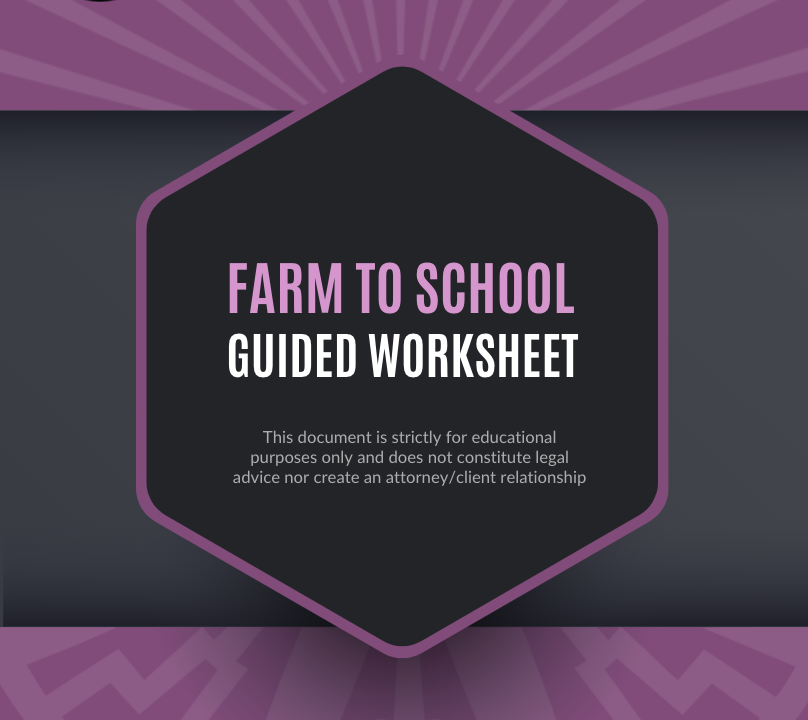This document is strictly for educational purposes only and does not constitute legal advice nor create an attorney/client relationship.
About Farm To School
Farm to School programs across the country—including programs in 185 Native schools serving 40,000 schoolchildren (1) —are a partnership between local schools, farmers, and communities that provide a source of fresh, locally grown food for schoolchildren.
185 NATIVE SCHOOLS WITH FARM TO SCHOOL PROGRAMS
40,000 SCHOOLCHILDREN SERVED
Every Farm to School program is different, but include some combination of procuring and serving local food or offering educational opportunities for students. This can look like a variety of different things, but likely involves some combination of:
- Sourcing local fresh fruits and vegetables for school meals, snack times, or taste testing
- Setting up school gardens where students can learn about growing food in a hands-on way
- Other educational activities that help students learn more about agriculture, food, and nutrition (2)
Farm to School can be a great market opportunity. Before you jump into a Farm To School market, though, you will want to do an assessment of your current production volume, current markets, and current certifications to decide if entering into Farm to School institutional markets represents a good business opportunity for you. Food safety certifications in particular can be very costly and time-consuming. Looking around for existing Farm to School markets is also going to be important. Small growers may also find it difficult to compete with larger national companies like Sysco and may find themselves priced out of the market, so exploring the possibility of forming intertribal cooperatives or similar models may allow Native growers to compete in the marketplace more easily.
Entering Farm to School Markets: Guided Self-Assessment For Individual Native Producers
Check out this USDA-FNS Farm To School Census resource to find school districts nearby that offer Farm to School programs: https://farmtoschoolcensus.fns.usda.gov/find-your-school-district
Is there a Farm To School program near you? If yes, list those:
NOTE: If you can’t find a Farm to School program near you, but you’re still interested in selling to one and know that there are other producers in your Tribal community who are as well, you might consider coming together to work with your Tribe and schools to start a program.
Recommended Resource: First Nations Development Institute’s Farm to School Resource Guide available at https://dpi.wi.gov/sites/default/files/imce/school-nutrition/pdf/first-nations-native-farm-to-school-resource-guide.pdf
What kind of food do your local F2S programs want to source?
NOTE: You may need to reach out directly to the food service director in each F2S school district to get this information.
What kind of food do you currently grow, raise, or harvest?
Most schools sourcing locally are looking for fresh fruits and vegetables, but other types of food products (especially traditional foods) may still be purchased, especially for special occasions.
Are you willing to expand what you currently grow or raise if schools need a different type of product?
What is your growing season for your products?
School years most commonly run between August-June. Will you have products available to sell to a school program during those months?
Food safety certifications & plans
Food safety requirements for products going into schools can be more intense than other markets, because young people are higher risk for serious health complications— and even death—if they get a food-borne illness. If you sell into other institutions right now—like hospitals or elder care centers—you are likely already familiar and complying with these more intense requirements. The food safety programs outlined below are not necessarily certifications you will be required to have to participate in a F2S program, but listing the ones you have will make it easier to know if you already qualify for your local F2S program, or if there are additional certifications you will need to complete first.
What food safety certifications does the school you want to sell to require (the food service director at the school will have this information)?
What food safety certifications or plans do you have right now?
Reference the following lists for some possibilities. Remember, these may not be requirements for your F2S program, but usually having some kind of certification (especially GAP, for FFV producers) will make it more likely that you can access F2S markets.
For fresh fruit & vegetable growers:
- Are you GAP (Good Agricultural Practices) certified?
- Have you taken a Produce Safety Rule training for the Food Safety Modernization Act?
- Do you have a farm food safety plan?
- Do you have organic certification from USDA?
For meat products:
- Do you have a HACCP (hazard analysis & critical control point) plan?
- Do you have a humane handling certificate?
- Do you have a kosher or halal meat processing certificate?
- Do you have organic certification?
For value-added or processed food producers:
- Are you GHP (Good Handling Practices) certified?
- Have you taken a Preventative Controls for Human Food Rule training for the Food Safety Modernization Act?
- Do you have a HACCP (hazard analysis & critical control point) plan?
Does your Tribe offer a food safety certification?
For example, the Oneida Nation of Wisconsin offers a food handlers certificate program. Does your Tribe offer a similar program, and if so, do you have that certification?
Does your state offer a food safety certification? Do you have that certification?
What are your current markets for your food products?
- Direct sales (farmers market, CSA, home shipping to consumers, etc)
- Sales to restaurants
- Sales to grocery stores/other large retailers (including local sales of DSD—direct store delivery—for big box retailers like Walmart)
- Sales to manufacturers
- Sales to hospitals, elder care/senior centers, or other institutional settings
- Sales to the federal government (through USDA Foods, Department of Defense Fresh, or other)
- Sales to Tribal programs
Price structure
Think about the products you are growing that you want to sell to a school program.
- What prices are you currently getting for those products?
- What prices can you expect to get from the school contracts?
Resource list:
- First Nations Development Institute, Native Farm to School: Resource Guide
- Explanation of Farm to School programs, potential participants in Farm to School programs, entering into/creating Farm to School programs.
- USDA-FNS Farm To School 2020 Census
- Can help you locate programs in your area.
- USDA-FNS Farm to School Grant program: https://www.fns.usda.gov/cfs/farm-school-grant-program.
- National Farm to School Network
- Intertribal Agriculture Council Technical Assistance Network
- Tribal Food Safety Alliance (a partnership of IAC, IFAI, and FRTEP)
- IFAI Model Tribal Food & Agriculture Code
- FRTEP programs
- State extension programs
(1) National Farm to School Network: Growing Farm to School in Native Communities, http://www.farmtoschool.org/Resources/Native%20Communities%20Fact%20Sheet.pdf
(2) National Farm to School Network: http://www.farmtoschool.org/about/what-is-farm-to-school

